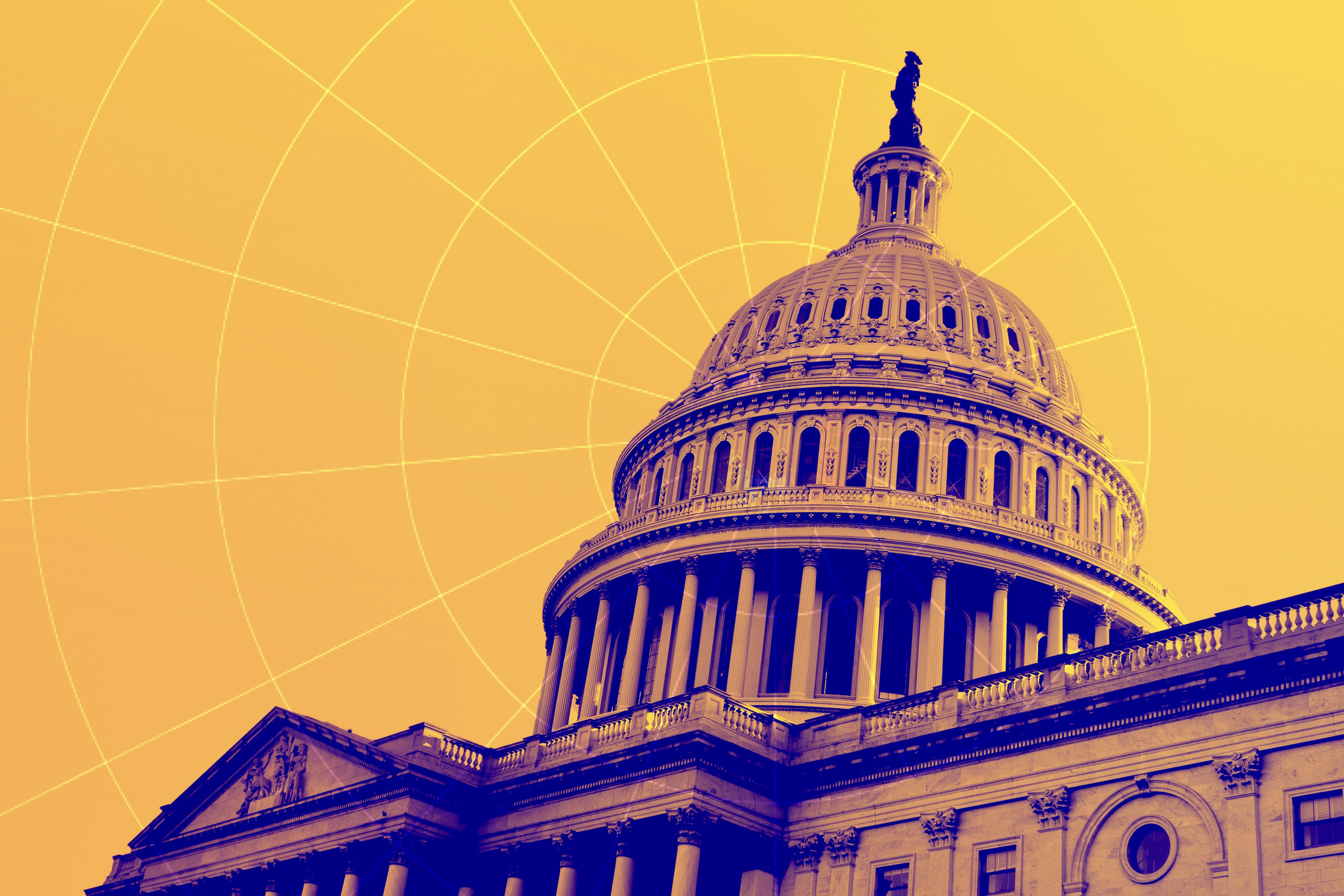What will drive IT spending in 2024?
Generative AI spending is unlikely to be high despite the hype, but sustainable technology will become a bigger priority.


If businesses have learned anything over the past few years, it’s that the right technology investment is crucial to staying nimble and navigating tricky economic periods.

With inflation impacting IT spending in 2023, businesses had to be selective over which technologies to invest in and which to defer to a time when budgets are less tight. Global IT spending is expected to rise 8% year-over-year to $5.1 trillion in 2024, a significant improvement on the 3.5% increase in 2023, according to Gartner projections.
The jump is down to what’s called ‘change fatigue’ – triggered by the rapid ongoing digitization, accelerated by the pandemic, CIOs and other IT leaders have been wary about committing funds to new projects while employees face digital transformation burnout. This has pushed some of what may have been spent in 2023 into 2024 and 2025.
Amid these concerns, ITPro spoke to experts in the field to identify the core themes and issues that are likely to influence IT spending in 2024.
Spending in 2024: Budgeting will be a juggling act
For those IT leaders who are committed to investing in digital transformation this year, it might be difficult to know where to start, especially given the overwhelming number of technology options on the market.
RELATED RESOURCE

The business value of Zscaler Data Protection
Discover a tool that minimizes risks related to data loss and other security events
DOWNLOAD NOW
“It’s going to be a juggling act for IT departments to decide where to spend in 2024,” says David Lees, CTO at Basis Technologies, a provider of DevOps and test automation software for SAP, whose customers have included Honda and Procter & Gamble.
Lees tells ITPro that he thinks companies could put a portion of their 2024 budgets aside for when they start migrating SAP systems onto S/4HANA, ahead of the mandated 2027 deadline. “On the user experience (UX) front, I expect we will see IT departments aim to attract and retain customers by implementing more accessible, intuitive interfaces. This is part of the ongoing trend towards greater customer service and product satisfaction.”
Sign up today and you will receive a free copy of our Future Focus 2025 report - the leading guidance on AI, cybersecurity and other IT challenges as per 700+ senior executives
Some businesses may also finally decide to move to cloud hyperscalers that can help in handling greater amounts of data and traffic and more complex workflows, Lees adds.
Spending in 2024: Cloud concerns will still loom
Hyperscalers often give the impression that they’re low-cost, but IT leaders believe that the perception that the cloud is cheaper is, in fact, misleading, according to research by Civo. Four-fifths of 1,000 businesses surveyed in 2022 called for hyperscalers to reduce their charges.
Unfortunately, cloud prices have continued to surge in 2023 as a result of inflation and aren’t expected to come down anytime soon. IBM announced in September that it’s to increase its cloud prices by up to 29% from January, a move that will impact users of its infrastructure-as-a-service (IaaS) and platform-as-a-service (PaaS) offerings.
“Increase in prices by the cloud vendors is a cause for concern, but is inevitable … Cloud spend will increase significantly in 2024,” says Anjali Subburaj, interim lead enterprise architect at European online pet food retailer Zooplus. This is echoed by Gartner, which has forecast global spending in 2024 on public cloud services to rise 20.4%, similar to the level of growth seen in 2023.
Spending in 2024: Cost savings and energy efficiency
Public cloud services are becoming indispensable thanks in large part to the adoption of generative AI. That said, Gartner isn’t expecting generative AI to have a material impact on IT budgets until 2025.
The influence AI can have on productivity is undeniable, but IT leaders need to think carefully before adopting it. For all the hype, many businesses may choose not to invest in generative AI just yet.
“AI presents a great opportunity for business growth and efficiency in 2024. Yet, as with all new technologies, you need to weigh up the energy costs with the business benefits,” says Chris Folkerd, director of core infrastructure at digital transformation specialists ANS. “AI can be more energy intensive than traditional workloads, so it’s important to balance new technologies like AI with your company’s environmental goals.”
Spending in 2024: Sustainable tech as a priority
Sustainable technology is likely to become a bigger priority for C-suite executives looking to add value across the board in 2024. Joan Daura, partner for transformational projects at digital transformation consultancy Monstarlab, is expecting more IT leaders to recognize the importance of ESG and to start adopting sustainable technologies.
Monstarlab and FT Longitude recently surveyed 875 business leaders in the US, Japan, Europe and the Middle East. The pair’s research found that among the top 21% of businesses, labeled ‘pioneers’, 87% had reduced their carbon footprint as a result of green digital transformation efforts. Only 25% of the bottom 17% of businesses, labeled ‘procrastinators’, reported a reduction.

The digital transformation laggards can often lack awareness of the role they can play as technology end users. Subburaj points out that some have a tendency to “absolve themselves” by assuming that sustainability is the responsibility of their hardware vendors or cloud providers. “There is considerable room for improvement in prioritizing energy efficiency at all stages of the technology life cycle.” she says, adding that businesses need to consider adopting both technologies that are designed to operate efficiently and sustainably and technologies that help them to reduce their own direct emissions.
Daura sums up the advantages of sustainable technology: “Companies that position themselves as sustainability leaders are more likely to gain a competitive edge in the market and attract and retain top talent. They also make themselves more appealing to customers who are becoming conscious of the environmental impact of the products and services they purchase.”
Whatever decisions IT leaders make this year, they don’t have to cost the earth. For those on a tight budget, a low-cost approach to digital transformation may even be appropriate.
Rich is a freelance journalist writing about business and technology for national, B2B and trade publications. While his specialist areas are digital transformation and leadership and workplace issues, he’s also covered everything from how AI can be used to manage inventory levels during stock shortages to how digital twins can transform healthcare. You can follow Rich on LinkedIn.
-
 How the UK public sector could benefit from strategic channel partnerships
How the UK public sector could benefit from strategic channel partnershipsIndustry Insights Is the channel the answer to the growing cost vs budget problem facing the public sector?
-
 Microsoft wants to replace C and C++ with Rust by 2030
Microsoft wants to replace C and C++ with Rust by 2030News Windows won’t be rewritten in Rust using AI, according to a senior Microsoft engineer, but the company still has bold plans for embracing the popular programming language
-
 Nearly half of all digital initiatives still fail – here’s how you can learn from the ‘digital vanguard’ and deliver success
Nearly half of all digital initiatives still fail – here’s how you can learn from the ‘digital vanguard’ and deliver successNews With most digital initiatives are failing to deliver, CIOs are urged to work more closely with other executives
-
 IT services spending set to surge in 2025 as CIOs shift to AI partner solutions
IT services spending set to surge in 2025 as CIOs shift to AI partner solutionsNews Organizations are set to shift from buying generative AI solutions to implementing partner solutions, according to Gartner
-
 Businesses still don’t know who’s accountable for AI at executive level
Businesses still don’t know who’s accountable for AI at executive levelNews Executives are unclear on where the buck stops in terms of AI management
-
 Gartner reveals the top trends for government technology use in 2024
Gartner reveals the top trends for government technology use in 2024News Five key areas that public sector CIOs will need to address to improve citizen services
-
 Return to office mandates can be divisive - here are three things business leaders can do to help smooth the transition
Return to office mandates can be divisive - here are three things business leaders can do to help smooth the transitionAnalysis With return to office mandates having sparked major spats between workers and employers, leaders need to consider how they can make changes attractive and effective
-
 Global IT spending set to reach $5 trillion in 2024 amid optimistic industry outlook
Global IT spending set to reach $5 trillion in 2024 amid optimistic industry outlookNews IT spending growth in 2024 is expected to be more than double that of 2023
-
 Half of jobseekers turned down offers last year amid growing demands on employers
Half of jobseekers turned down offers last year amid growing demands on employersNews An increasingly competitive talent landscape means employers are being forced to offer a wider range of incentives
-
 Worldwide IT spending to grow 4.3% in 2023, with no significant AI impact
Worldwide IT spending to grow 4.3% in 2023, with no significant AI impactNews Spending patterns have changed as companies take an inward focus
